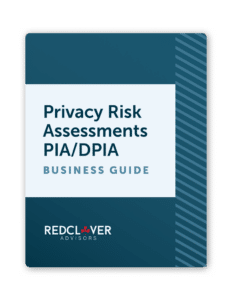Everyone needs clothes, right?
(The answer is yes.)
Clothes are one of the essential, everyday parts of life. Yet there’s a marked difference between cheap fast fashion—with ethically dubious origins—and the clothes you can wear day after day, year after year.
AI tools are a lot like fashion. They fulfill (or at least promise to fulfill) real business needs. But there’s a big difference between the tools we feel good about using—which fulfill real business needs to improve our lives—and the tools that just have good marketing.
So, how can businesses tell which AI tools are right for them?
While every business has different needs, there are frameworks that can help companies evaluate AI tools based on specific priorities, such as data privacy, security, and legal compliance.
Data privacy considerations, in particular, can be difficult for businesses to understand, partly because data privacy requirements vary greatly between industries and geographic locations. Yet they’re critical for your business’s long-term goals and success.
So, let’s talk about how businesses can evaluate AI tools with privacy in mind.
Understanding AI and data privacy
Countless AI tools are available for businesses. These tools have an infinite number of use cases and (widely) varying efficacy rates. Through Amazon Web Services alone, users can access more than 3,500+ machine learning tools.
For every single task you have ever had on your to-do list, there’s probably an AI tool for it now.
But there’s a big step between an AI tool existing and actually being the right fit for your company. Many of these AI tools risk introducing unethical or illegal data privacy practices to your business:
- AI ethics: AI tools can lead to biased or unfair decision-making, significantly impacting people’s livelihoods.
- Employee and consumer trust: If your business is found to use tools that infringe on data privacy, you will lose both your consumers’ and your employees’ trust, which could be the nail in the coffin for your business.
- Regulatory compliance: AI-specific regulations are on the rise, from the EU’s AI Act to Utah’s AI Policy Act, and they will bring detailed requirements that affect how businesses can use AI.
Key privacy considerations for AI tools
When we look at how an AI tool stacks up against data privacy risks, we want to look at it from a few different angles, including:
- Data use and handling: How is personal data collected and utilized by AI systems?
- Informed consent: Are users aware of your data collection practices and how you plan to store, process, use, and share their data?
- Profiling and risk: Is your AI use at risk of reflecting and amplifying human biases for decision-making?
- Compliance: Are you compliant with state data privacy and AI use case regulations?
- Security: By bringing in this AI vendor, are you increasing your data security risk?
- Transparency and accountability: Does this AI tool suffer from “black box” syndrome? Can you understand how it arrives at its decisions and outputs?
Evaluating AI tools for privacy
How can businesses identify and evaluate potential AI tools and use cases?
First, consider whether the AI tool solves an existing business problem. Or does it just have good marketing?
That should narrow down the field quite a bit.
Once you have your short list of AI tools, use the following resources and frameworks to evaluate the data privacy risks:
Privacy impact assessments
Looking at a new AI tool? A privacy impact assessment (PIA) is going to be in order. PIAs evaluate how an organization’s processes, features, services, programs, or products pose a risk to personal information—exactly the information your business needs to figure out whether an AI tool is a good fit.
(A PIA also serves the legal purpose of demonstrating that your business complies with relevant privacy requirements—important as AI is often a new technology requiring one.)
Through a PIA, your business should:
- Determine applicable jurisdictions: What regulations apply to your business, and what are their requirements?
- Involve all stakeholders: Ensure all relevant stakeholders are heard in conversations around a specific privacy issue.
- Develop a governance plan: Define when a PIA is necessary and how that process will be carried out.
- Establish processes and policies: Provide clear, end-to-end documentation of your policies and processes.
- Identify potential risks: Update safeguards and address system vulnerabilities.
- Regularly review your assessments: Adjust your impact assessments based on any internal or external change in variables.
PIAs are a privacy standby, so it may be that your business already has relevant processes in place. In that case, evaluating AI use cases can be wrapped in.
However, don’t let the absence of established PIAs stop you: you can lead the charge with PIAs that evaluate AI tools and use cases and build around that. Or you can handle them separately! The right approach is the one that meets your needs as a business.
Privacy Risk Assessments: PIA/DPIA Business Guide
Our Privacy Risk Assessment Guide breaks down the privacy review process with clear, straightforward language.

Data inventories
Data inventories provide critical information and allow businesses to understand how data travels throughout their organization and affiliated companies. For AI tools, a data inventory can help identify any vulnerabilities and risks to your business, such as AI tools consuming certain information that violates data privacy regulations.
Vendor assessments
Even if you’ve done everything right internally for data privacy, bad third-party practices can still introduce risk and expose your business to legal liabilities. A standard vendor assessment can prevent significant headaches by ensuring your partners have similar priorities regarding data privacy and AI.
Making these reviews part of your ongoing third-party management program helps you verify that all vendors adhere to the same high standards.
Best practices for privacy-conscious AI implementation
PIAs, data inventories, and vendor assessments provide valuable context for evaluating AI tools, but they aren’t the sum total of the necessary steps. Make sure to incorporate the following best practices as well.
Establish clear data governance policies for AI use
For larger companies, consider establishing a cross-departmental privacy steering committee.
This helps provide a clear path to data and AI governance, establishing processes to manage data privacy requirements and examine any new business tools.
Consider using academic or industry resources, such as NIST’s Data Privacy Framework or the University of Toronto’s VALID-AI questions, for your governance and evaluation efforts.
Provide regular training on privacy considerations for AI users
AI use cases can span almost every business department, but it’s not enough to provide annual IT training on phishing scams.
Instead, system users should receive regular training on AI privacy considerations. Provide an additional training session or resource for your team when there are significant industry or regulatory updates.
Monitor and audit AI systems for privacy compliance
Even if you initially approved an AI system for specific use cases, things change. Check in on your AI systems with regular audits to ensure that:
- Your AI tool is still performing its intended use case.
- Your AI tool hasn’t changed how it processes data.
- Your team hasn’t expanded the use of that AI tool beyond its approved parameters.
Stay informed about evolving privacy regulations and AI technologies
Whether through podcasts, newsletters, or LinkedIn, find ways to stay informed about evolving privacy regulations and AI technology developments.
Keep data privacy in mind for your peace of mind
Prioritizing privacy in AI evaluations is just good business. It allows companies to protect themselves and their people, and when implemented correctly, it can also provide a competitive edge in the market.
A privacy-first program is key in a rapidly evolving AI landscape. Schedule a consultation to learn more about implementing privacy-conscious AI for your business.


